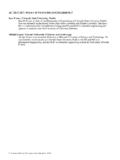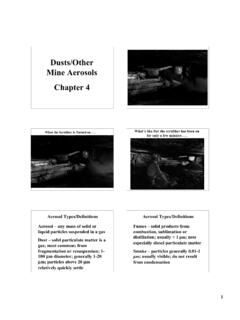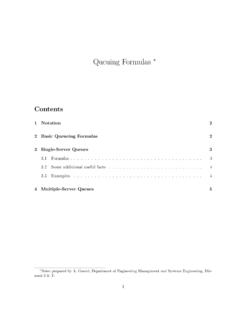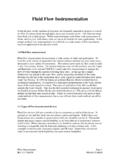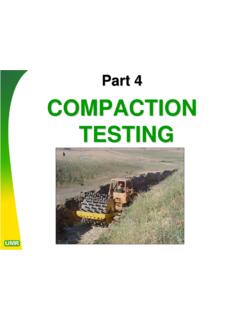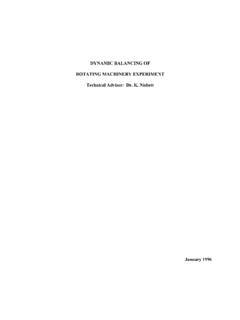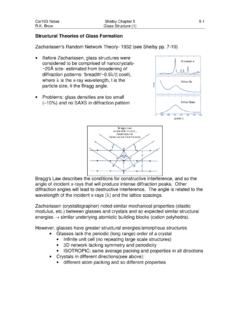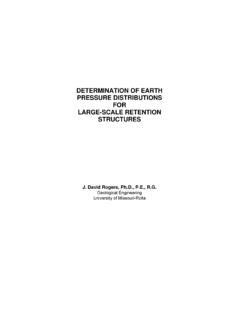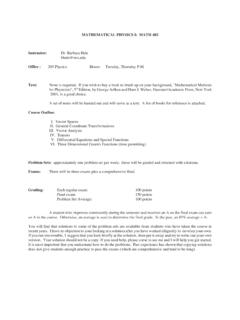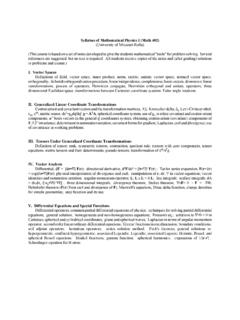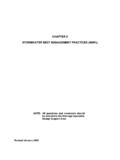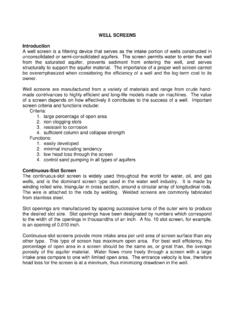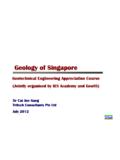Transcription of Fundamentals of CONE PENETROMETER TEST (CPT) …
1 Fundamentals of Fundamentals of cone cone PENETROMETER TEST PENETROMETER TEST (CPT) SOUNDINGS(CPT) SOUNDINGSJ. David Rogers, , , David Rogers, , , Penetration cone Penetration TestTest CPT soundings can be very CPT soundings can be very effective in site effective in site characterization, especially characterization, especially sites with discrete sites with discrete stratigraphic horizons or stratigraphic horizons or discontinuous lenses. Toda, most of the Toda, most of the commercially-available CPT commercially-available CPT rigs operate electronic rigs operate electronic friction cone and piezocone friction cone and piezocone penetrometers, whose penetrometers, whose testing procedures are testing procedures are outlined in ASTM D-5778, outlined in ASTM D-5778, adopted in in 1995.
2 ASTM adopted the CPT procedure as test D-3441 in ASTM adopted the CPT procedure as test D-3441 in It is a valuable method of assessing subsurface It is a valuable method of assessing subsurface stratigraphy associated with soft materials, stratigraphy associated with soft materials, discontinuous lenses, organic materials (peat), discontinuous lenses, organic materials (peat), potentially liquefiable materials (silt, sands and potentially liquefiable materials (silt, sands and granule gravel), and gravel), and of cone Tip and rate of advanceShape of cone Tip and rate of advance The standardized cone - PENETROMETER test (CPT)
3 Involves pushing a diameter 55o to 60o cone through the underlying ground at a rate of 1 to 2 vs Tip Sleeve vs Tip resistanceresistance These devices produce a These devices produce a computerized log of tip computerized log of tip and sleeve resistance, the and sleeve resistance, the ratio between the two, ratio between the two, induced pore pressure just induced pore pressure just behind the cone tip, pore behind the cone tip, pore pressure ratio (pressure ratio (change in change in pore pressure divided by pore pressure divided by measured pressuremeasured pressure) and ) and lithologic interpretation of lithologic interpretation of each 2 cm interval are each 2 cm interval are continuously logged and continuously logged and can usually be printed can usually be printed onsiteonsite CPT rigsCPT rigs usually employ usually employ 1 m long m long rods.
4 They can usually They can usually penetrate normally penetrate normally consolidated soils and consolidated soils and colluvium, but have also colluvium, but have also been employed to been employed to characterize weathered characterize weathered Quaternary and Tertiary-Quaternary and Tertiary-age strata. age strata. Cemented or Cemented or unweathered horizons, unweathered horizons, such as sandstone, such as sandstone, conglomerate or conglomerate or massive volcanic rock massive volcanic rock can impede can impede advancement of the advancement of the probeprobe The cone is able to delineate even the smallest ( The cone is able to delineate even the smallest ( mm/1/4-inch thick) low strength horizons, easily missed mm/1/4-inch thick)
5 Low strength horizons, easily missed in most conventional subsurface sampling most conventional subsurface sampling ResistanceTip Resistance The The tip resistancetip resistance is measured by load cells is measured by load cells located just behind the tapered cone . located just behind the tapered cone . The tip resistance is theoretically related to The tip resistance is theoretically related to undrained shear strength of a saturated undrained shear strength of a saturated cohesive material, while the sleeve friction is cohesive material, while the sleeve friction is theoretically related to the friction of the theoretically related to the friction of the horizon being penetrated.
6 Horizon being penetrated. The tapered cone head forces failure of the The tapered cone head forces failure of the soil about 15 inches ahead of the tip and the soil about 15 inches ahead of the tip and the resistance is measured with an embedded resistance is measured with an embedded load cell in tons/ftload cell in tons/ft22 (tsf). (tsf). The tip of the cone PENETROMETER senses out ahead of itself as it induces a local bearing failure of the soil it passes through. The tip resistance recorded by the instrument is an average across this tip influence zone.
7 Therefore, caution should be exercised when evaluating insitu strength parameters for horizons less than about 8 inches (20 cm) thick Local or Sleeve FrictionLocal or Sleeve Friction The local friction is measured by tension load cells embedded in the sleeve for a distance of 4 inches behind the tip. They measure the average skin friction as the probe is advanced through the soil. If cohesive soils are partially saturated, they may exert appreciable skin friction, negating the interpretive program. Friction Ratio, FFriction Ratio, Frr The The friction ratiofriction ratio is given in percent.
8 It is the is given in percent. It is the ratio of skin friction divided by the tip ratio of skin friction divided by the tip resistance (both in tsf). resistance (both in tsf). It is used to classify the soil, by its behavior, or It is used to classify the soil, by its behavior, or reaction to the cone being forced through the reaction to the cone being forced through the High ratios generally indicate clayey materials High ratios generally indicate clayey materials (high c, low ) while lower ratios are typical of (high c, low ) while lower ratios are typical of sandy materials (or dry desiccated clays).
9 Sandy materials (or dry desiccated clays). Typical skin friction to tip friction ratios are 1% Typical skin friction to tip friction ratios are 1% to 10%. The ratio seldom, if ever, exceeds 15 to 10%. The ratio seldom, if ever, exceeds 15 to 20%. Sands are generally identified by to 20%. Sands are generally identified by exhibiting a ratio < 1%. The exception is exhibiting a ratio < 1%. The exception is buried wood, which can result in Fburied wood, which can result in Frr values values much greater than 20 (and are not interpreted).
10 Much greater than 20 (and are not interpreted). Pore PressurePore Pressure Piezocones also measure Piezocones also measure insitu pore pressureinsitu pore pressure (in psi), in (in psi), in either dynamic (while advancing the cone ) or static (holding either dynamic (while advancing the cone ) or static (holding the cone stationary) modes. the cone stationary) modes. Piezocones employ a porous plastic insert just behind the Piezocones employ a porous plastic insert just behind the tapered head that is made of hydrophilic polypropylene, tapered head that is made of hydrophilic polypropylene, with a nominal particle size of 120 microns.
